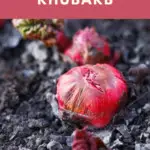
Rhubarb (Rheum rhabarbarum) is a once-upon-a-time beloved perennial that slowly fell out of fashion, and popularity, after the World Wars.
At that time, it seemed that it was only good enough for a humble pie. A far cry from the sweetest forced rhubarb of the Victorian days.
Did you know that they even went so far as to harvest the rhubarb stalks at night, by torchlight? So as not to let it come under the strong light of the sun. Sounds like a strange way to harvest? Try it and taste what happens!
Luckily rhubarb is once again enjoying favorable attention among gardeners. Not only because you can plant it once (or divide it several times) for a reliable harvest year after year, but because it tastes amazing when you know how to cook it right.
Here is an appetizing hint before you get ready to plant a few crowns in your garden: rhubarb is fantastic in more than just pie.
Is growing rhubarb easy?
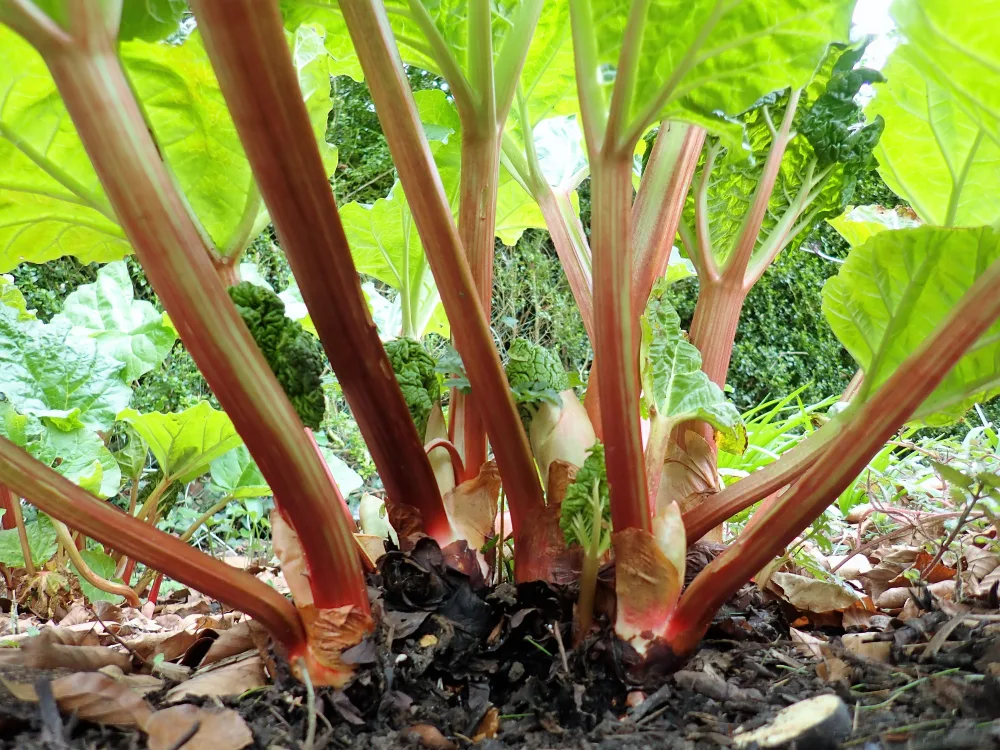
Easy, yes. As in uncomplicated, though not without its own set of problems.
Location of your rhubarb does matter, as you will find out in just a minute. This can ultimately affect how lush and tall your rhubarb grows, as well as if it may become susceptible to Verticillium wilt on the leaves, or crown rot in the roots.
We’ve had both issues in our years of growing rhubarb.
It can be very picky about the location, the quality of soil and how much intense sun it is exposed to daily. In the course of homesteading in a very hot summer in Hungary, we had Estonian volunteers poke fun at our very small stalks (though they were incredibly fragrant). Think of Crocodile Dundee’s line, “That’s not a knife. That’s a knife!” Only replace that with a humongous stalk of rhubarb.
Rhubarb grows the most successfully when summer temperatures don’t exceed 75°F (24°C), or fall too much below 40°F (4.4°C).
Bottom line: if you have the ideal temperature, you get to eat the ideal rhubarb. The rest of us will have to settle for something homegrown and invariably tasty in-between. Alternatively you could purchase from the market, or further off, from slightly cooler climates where rhubarb is better suited.
When to plant rhubarb?
In short, fall or early spring.
If you missed your first chance, simply take the next one.
But, you will need to exercise some patience. Plant rhubarb among your other fruits and vegetables, because it will be more than a year before your first harvest! And up to four years before a full rhubarb harvest.
Until then, sample a few stalks sparingly each season to let your rhubarb focus its attention on underground growth.
You don’t even need to fuss too much over your rhubarb. Once it decides that it really likes a location, your reliable and bountiful harvests are guaranteed.
If too much rhubarb becomes your problem (that is a wonderful problem to have), you can always divide your crowns and sell them for a little extra cash, give them as gifts, or make and trade/barter rhubarb jam.
What is the best location to grow rhubarb in your garden?
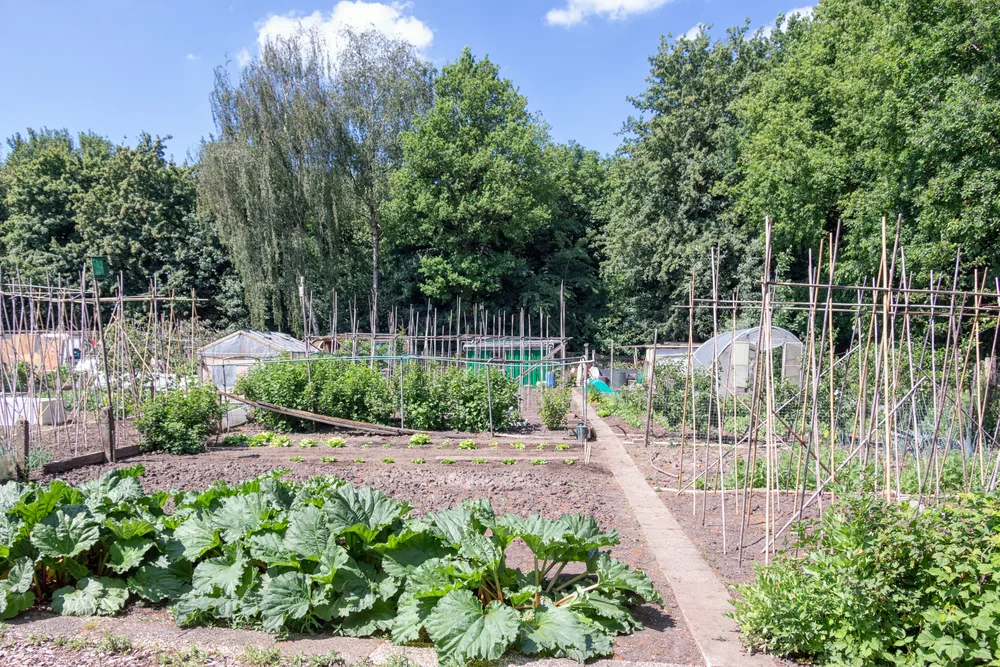
Most articles on growing rhubarb will tell you that full sun is best. Though this may not be the optimal place in your garden. Particularly if you are growing rhubarb in a warmer climate, or have multiple days of intense sun in a row. In which case, a shade cloth may be needed to protect the plant.
Rhubarb ultimately grows the best in full sun to partial shade.
It also prefers well-draining soil with a soil pH of 5.0 to 6.8.
Clay soil can be too heavy. To overcome this, know that rhubarb can be planted in pots as well.
It is also worth mentioning that depending on how many rhubarb crowns you have planted, the rhubarb can start to take up a lot of space when fully mature – so plan for it in advance! Plants range in height from 3 to 4 feet, as they spread out their large leaves the same distance in either direction.
A note about rhubarb leaves
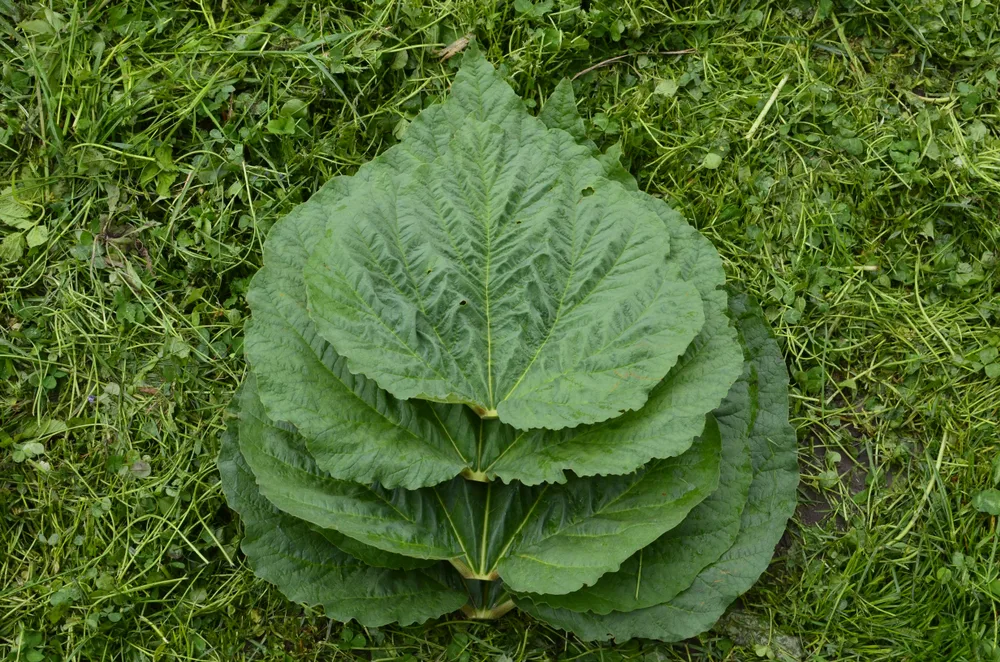
Everyone will be the first to tell you that rhubarb leaves are poisonous.
This is absolutely true.
Rhubarb leaves contain high levels of oxalic acid and should never be eaten. What you can do with them, however, is cut them off when you harvest and toss them on your compost pile. They will be much happier there.
How to plant rhubarb
One of the greatest things about perennials is that most of them can easily be propagated by cuttings – or root divisions.
With a future harvest in mind, you will need to decide whether you want to start your rhubarb from seeds or crowns.
There are advantages to both, though starting from crowns is faster and more reliable.
Starting rhubarb from seeds
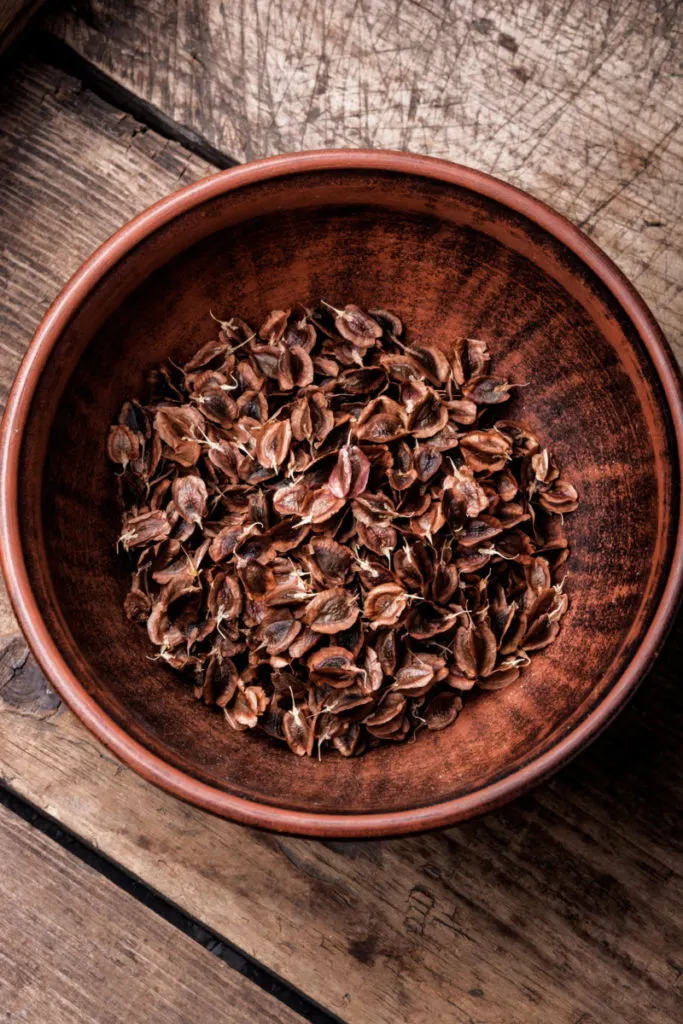
If you absolutely cannot find anyone local with rhubarb crowns for sale, or simply don’t have the money to pay up to $30 or more for a starter plant purchased online, starting rhubarb from seed can be a viable option.
It’s much cheaper, with this packet of seeds costing less than 10c per seed.
In this case, you get to choose whether you want to grow it as an annual, or a perennial.
Please note, however, that the stalks may not be true to type – or the intense color that you are used to from store-bought varieties.
They are still lovely and mouthwateringly flavorful in more than just a pie.
Some people advise against wasting your time, others take the opportunity as a challenge.
This post on growing rhubarb from seed from Practical Self Reliance is an excellent one, should seeds be your only option, for now.
Planting rhubarb from crowns

The easier and less time-consuming, albeit (sometimes) more expensive, route is to start with rhubarb crowns.
Crowns are established plants that are at least one year old. If you are dividing your own rhubarb, or beginning from potted crowns, it is best to work the planting area first by weeding a large patch. The next step is to dig and loosen the soil, adding in a generous amount of well-rotted manure or ripened compost.
Plant them so that the tip of the crown sits about 1″ below the soil.
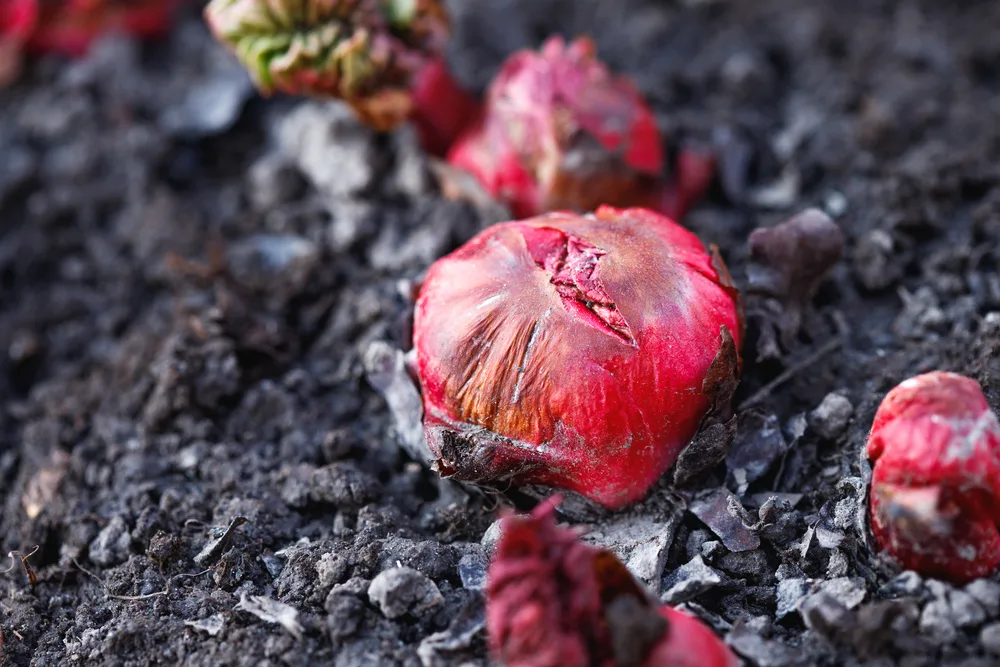
If you are planting in heavier, wetter soil, make sure the rhubarb crown rests at ground level. This helps to prevent waterlogged crown rot.
Allow sufficient spacing between plants, at least 36″ apart.
Growing rhubarb in a pot
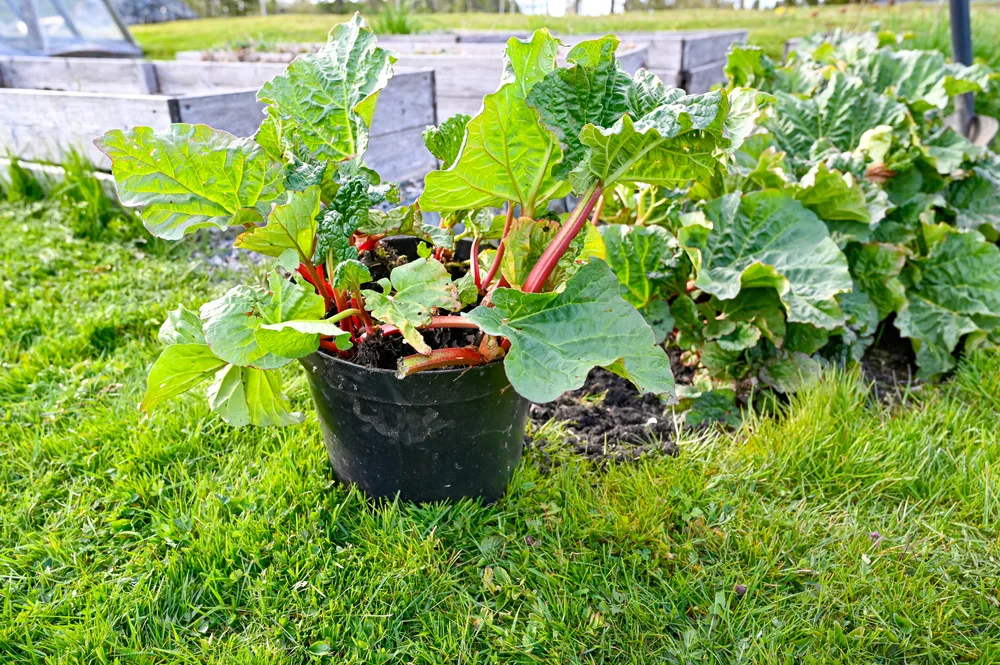
With a small garden, and a large love for rhubarb, you can still find space for this special plant on your patio. That is, when you plant your rhubarb in an over-sized pot or container.
Rhubarb has a large root system which must be nurtured in order to thrive. Because it grows so prodigiously above the ground, so must it below the soil. Roots can reach to 24″ deep and about 18″ wide. Naturally, this depends greatly on the age of the plant. Choose the size of your large pot accordingly.
Once the rhubarb crowns are planted, just as you would plant straight in the ground, you will also take care of it the same way. Although it may need additional fertilizer, and a closer attention to watering, as the soil in containers dries out faster. Just be sure not to overwater, or drown the roots.
What to plant – and not plant – next to your rhubarb
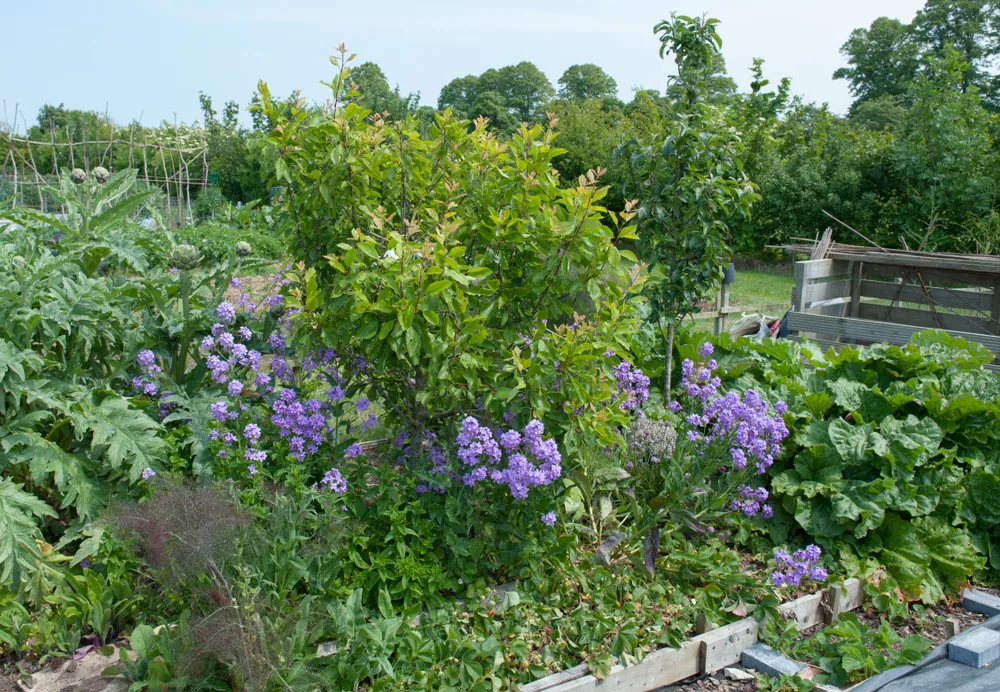
Companion planting is one way to ensure that your growing number of rhubarb plants are happy. When they are content, you can enjoy their success too – in the form of a crumble, sauce or rhubarb-strawberry jam.
An interesting planting combination that comes up in online searches of companion plants for rhubarb is an interspersed mixture of rhubarb, asparagus, horseradish and strawberries, though I have yet to try this myself.
Oddly enough, many cabbage family crops are more than willing to share space with your rhubarb. This includes kale, cabbage, Brussels sprouts and more.
Rhubarb also pairs well in plantings of columbine, garlic and onions.
What shouldn’t you plant next to rhubarb?
Potatoes are a definite no-no.
As are sunflowers, docks and thistles which all attract the rhubarb curculio. This is a weevil, just in case you were wondering.
Caring for your rhubarb
When all is said and done, caring for rhubarb is no more difficult than tending to any other plant in the garden. As long as you understand its preferences, the need for both sun and shade, as well as a certain amount of water and fertilizer, what could possibly go wrong?
In the first year…
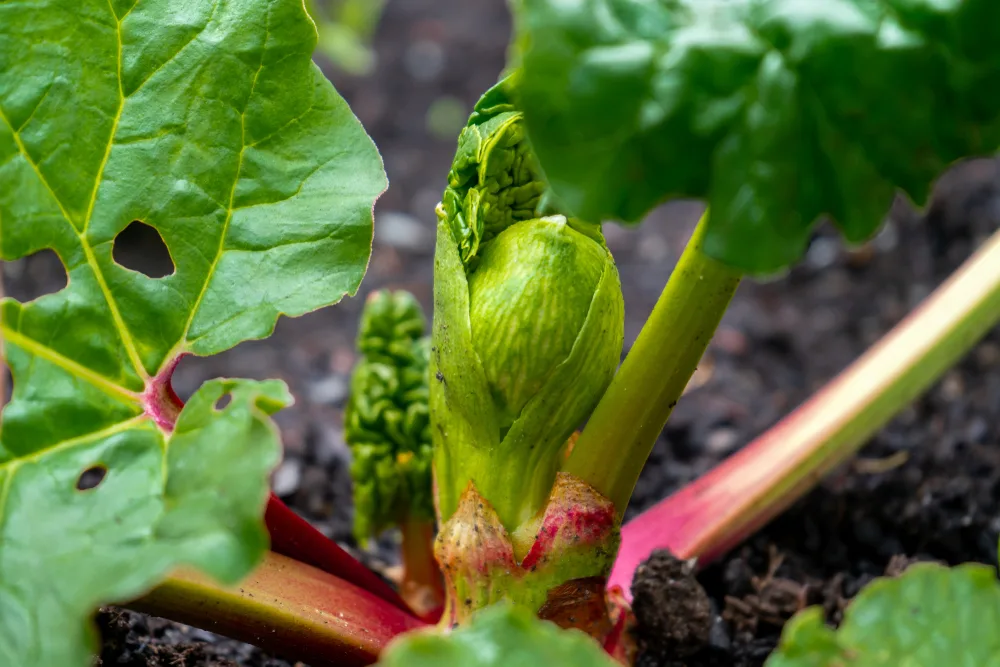
The first year of watching your rhubarb grow, will be tough. For all you get to do is watch and wait.
While your rhubarb may appear lush from afar, removing stalks in the first year will weaken its grand root system that it needs to survive. And if you want your rhubarb to stick around for 10-15 years (the expected longevity of rhubarb though, some say, can even be around 40+ years!), you better just admire your stalks.
You could also pamper it with a thick layer of mulch. To prevent weeds from popping up around the base, also to keep the moisture in the ground.
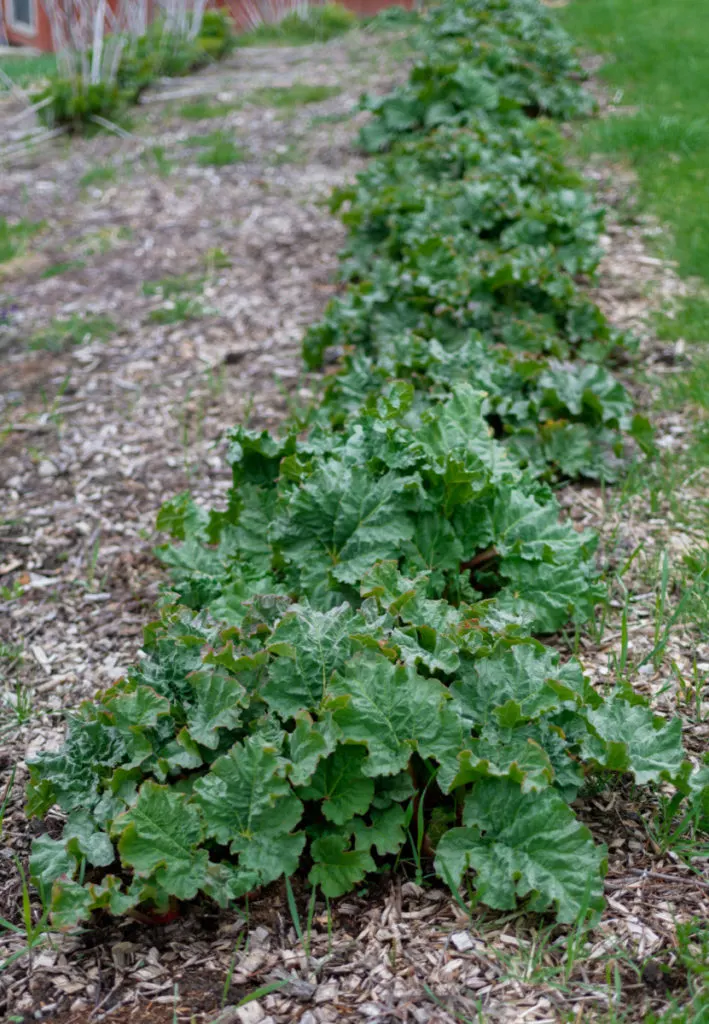
The first year is the waiting period. Plant, water, fertilize and watch how it grows. Because next year it can get even bigger. You can also use this time to plant some of those companion plants from above as you think about gardening in (perennial) decades, as opposed to a single (annual) year.
For decades to come…
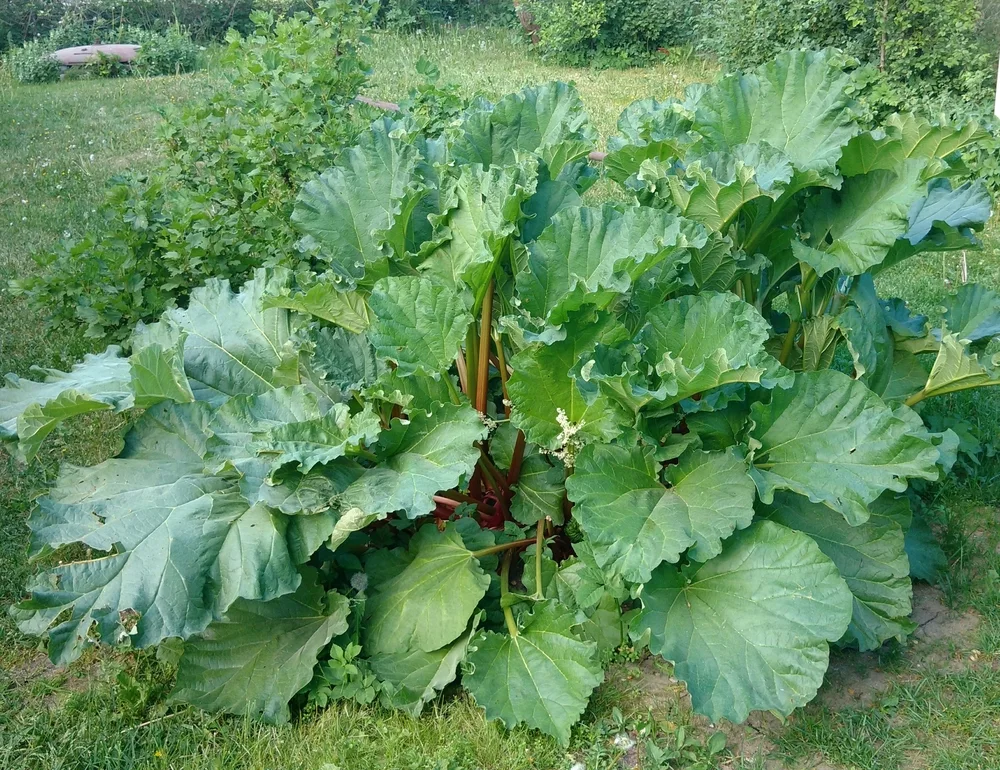
As the rhubarb gets established in your garden, you will find that it takes on the power to grow on its own. Though every 4-5 years it can be dug up and divided into more crowns, so as not to become overcrowded and thin.
Throughout the summer, be sure that the soil around your rhubarb is sufficiently wet. Never too dry or completely soaked.
In fall, it will always appreciate a dressing of well-aged manure.
Early in spring it can benefit from a fresh layer of compost with an additional layer of mulch, such as straw, hay, or autumn leaves.
As soon as the rhubarb sends up seed stalks, cut them immediately.
And as far as harvesting in the second year goes, sample just a few stalks from each plant so you know what sort of goodness you are getting into. In the following years, you can attend to full harvests, complete with pie after crumble after muffin, in season.
Fertilizing rhubarb
With a healthy soil under foot, rhubarb won’t need much fertilizer at all. Though it can always benefit from ripe manure in fall.
If you are ready and willing to try making your own fertilizer, here are 10 liquid fertilizer teas that can be made from weeds and plants.
When is rhubarb ripe?
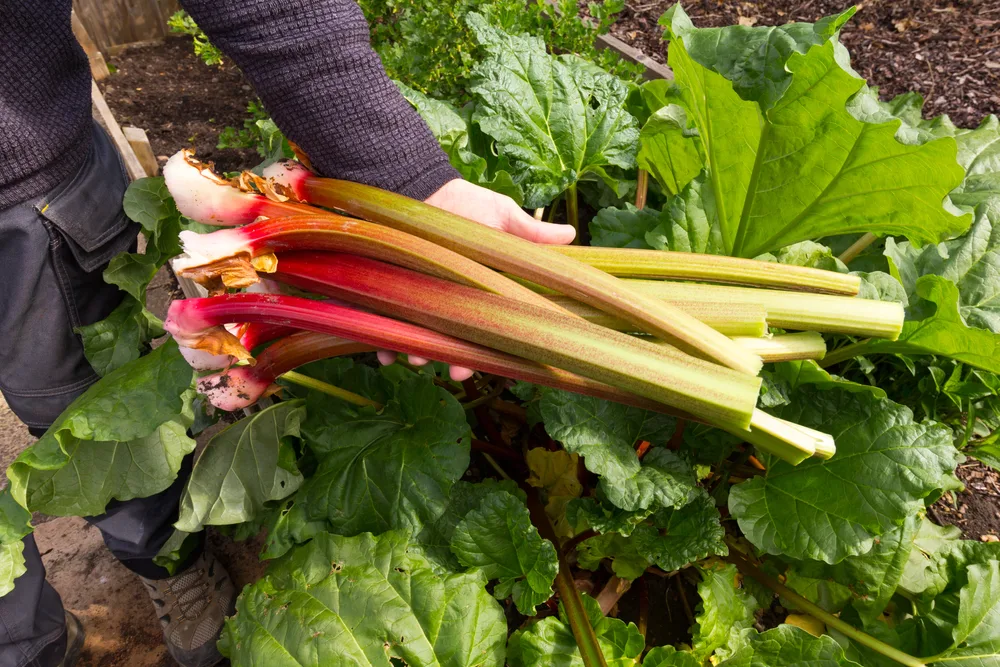
Harvesting is the second best part of growing rhubarb. Eating is the first. But how do you know when it is ready to eat?
As kids, my sisters and I always did a taste test of a raw rhubarb stalk in early summer just to see if it was ready. It had to have the perfect amount of sourness to it. And the winner was who could keep a piece in their mouth the longest. I lost. Then we would dip the stalk in sugar and take another bite. It was nicely tart, though cooked is way better!
Perhaps there is a better way to tell when rhubarb is ready to harvest?
Technically, rhubarb is ready to eat just about anytime it is large enough, from May to mid-June. However, just because it looks appetizing and ready-to-eat and you really want to bake that rhubarb pie right now, doesn’t mean it is ready to harvest.
Look for other signs, such as the rhubarb stalks being at least 10-12″ long before harvesting. And never, harvest the entire plant! This will put too much stress on the roots – the heart of the rhubarb.
Harvest some stalks here, a few more there and give it a break in between your rhubarb cravings.
If you want to harvest more – to fill your freezer or your pantry – simply make the space to plant even more rhubarb.
Harvesting rhubarb – to cut or pull?

Pulling your rhubarb is the ultimate best way to harvest, hands down. Literally. Reach down close to the base of stalk, twist and pull up.
It is as simple as this: when you use a knife to cut the stalk, it dies back.
As you pull a rhubarb stalk with one swift motion, this act signals to the plant to put energy into regrowing a new stalk. In turn, this gives you a more robust rhubarb plant. With potentially more to harvest in the coming years.
Is there more than one variety of rhubarb?
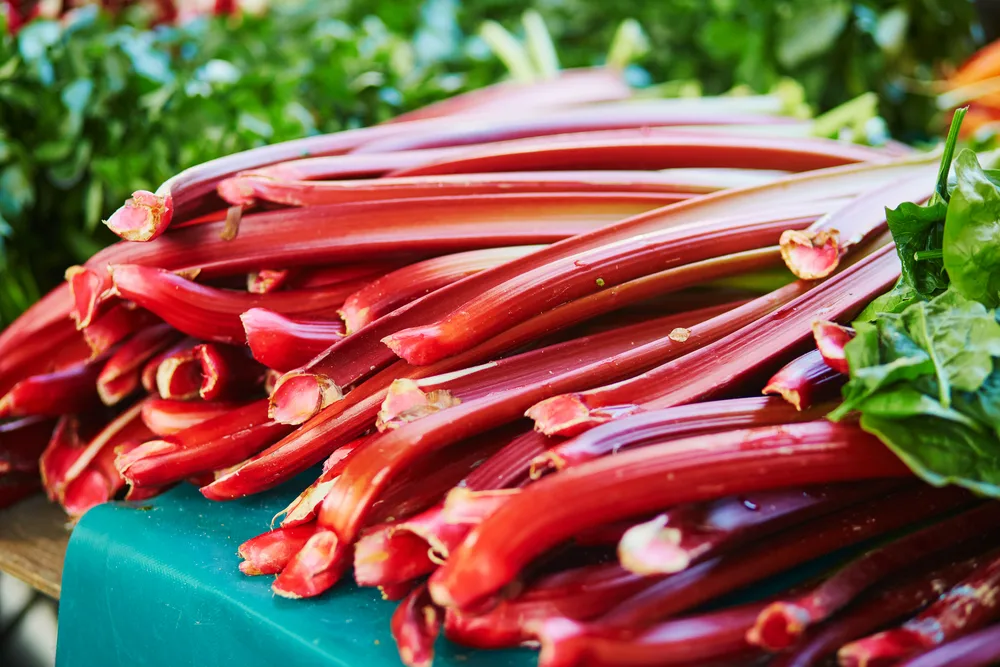
If you have been purchasing rhubarb at the store, you may think there is only one kind. It is more like there are a few varieties that are commercially grown and distributed.
When you grow rhubarb in your garden, you get to choose what kind(s) you want! With more than 50 varieties, you are sure to find the one that makes your rhubarb pie stand out among all the rest.
Red or green stalks? It makes no difference in flavor, only in appearance.
Why not grow some of both?
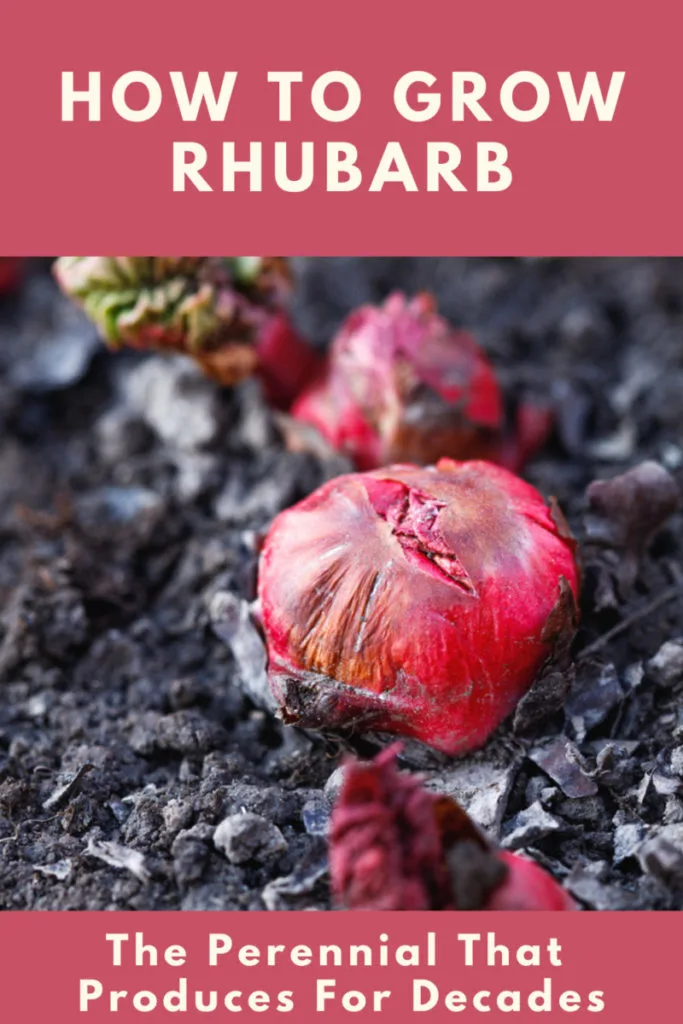

Get the famous Rural Sprout newsletter delivered to your inbox.
Including Sunday musings from our editor, Tracey, as well as “What’s Up Wednesday” our roundup of what’s in season and new article updates and alerts.


